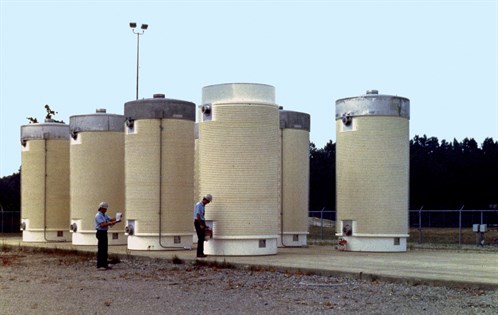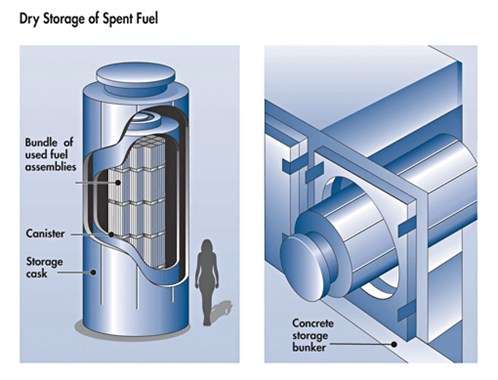Dry cask storage allows spent fuel that has already been cooled
in the spent
fuel pool for at least one year to be surrounded by inert
gas inside a container called a cask. The casks are typically steel
cylinders that are either welded or bolted closed. The steel
cylinder provides a leak-tight confinement of the spent fuel. Each
cylinder is surrounded by additional steel, concrete, or other
material to provide radiation shielding to workers and members of
the public. Some of the cask designs can be used for both storage
and transportation.
There are various dry
storage cask system designs. With some designs, the steel
cylinders containing the fuel are placed vertically in a concrete
vault; other designs orient the cylinders horizontally. The
concrete vaults provide the radiation shielding. Other cask designs
orient the steel cylinder vertically on a concrete pad at a dry
cask storage site and use both metal and concrete outer cylinders
for radiation shielding. See the picture of a
typical dry cask storage system.
The first dry storage installation was licensed by the NRC in
1986 at the Surry Nuclear Power Plant in Virginia.
Spent fuel is currently stored in dry cask systems at a growing
number of power plant sites, and at an interim facility located at
the Idaho National Environmental and Engineering Laboratory near
Idaho Falls, Idaho. See the map showing the location
of existing independent spent fuel storage installations.
(Source: NRC)

